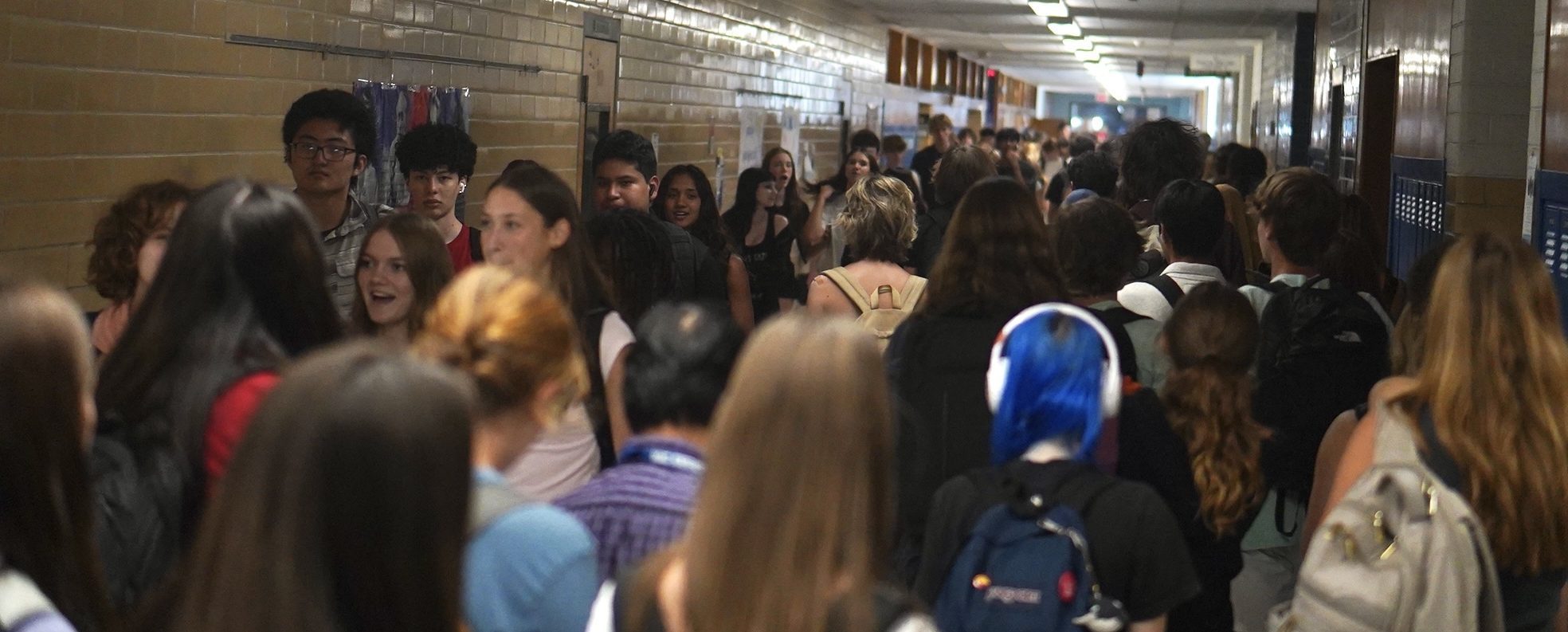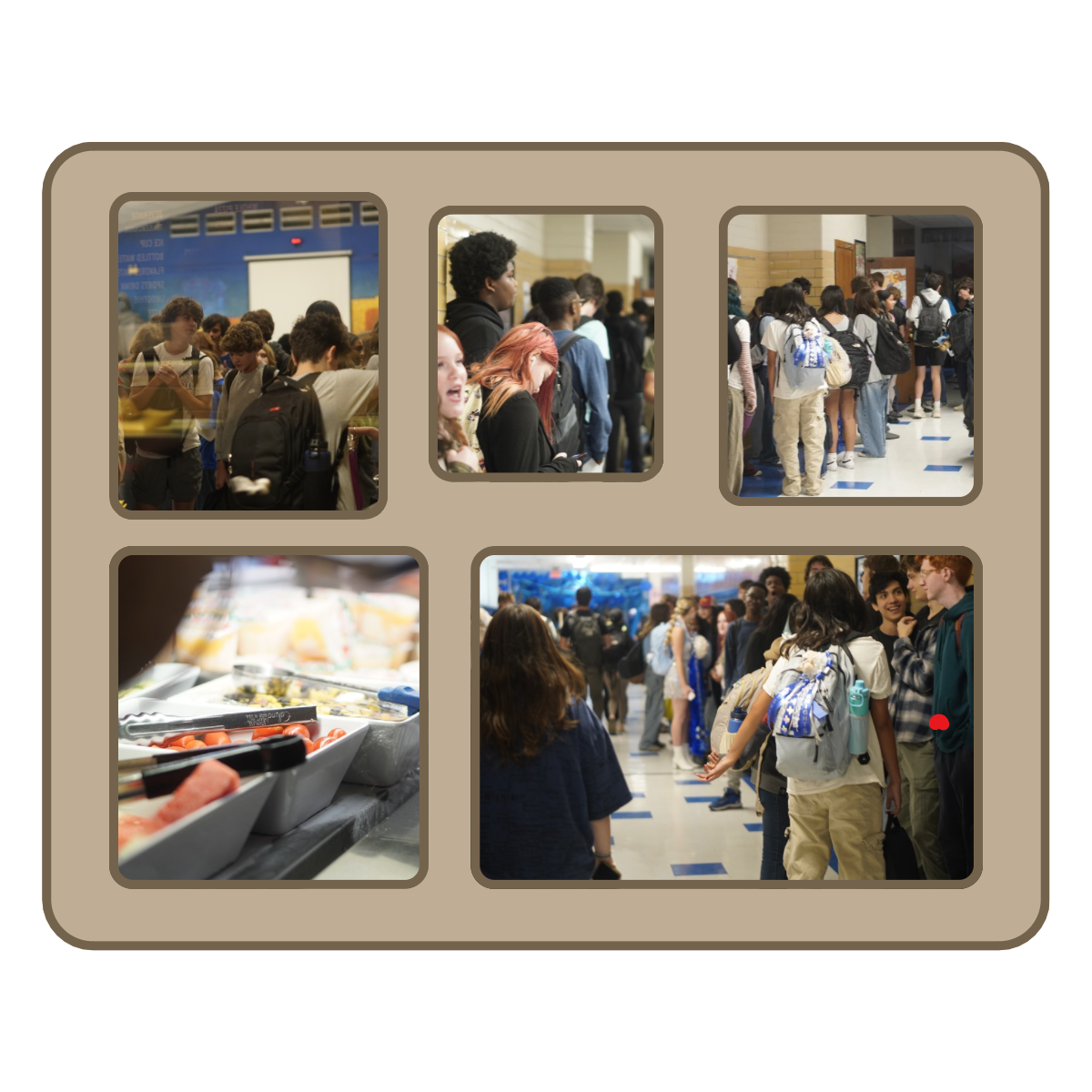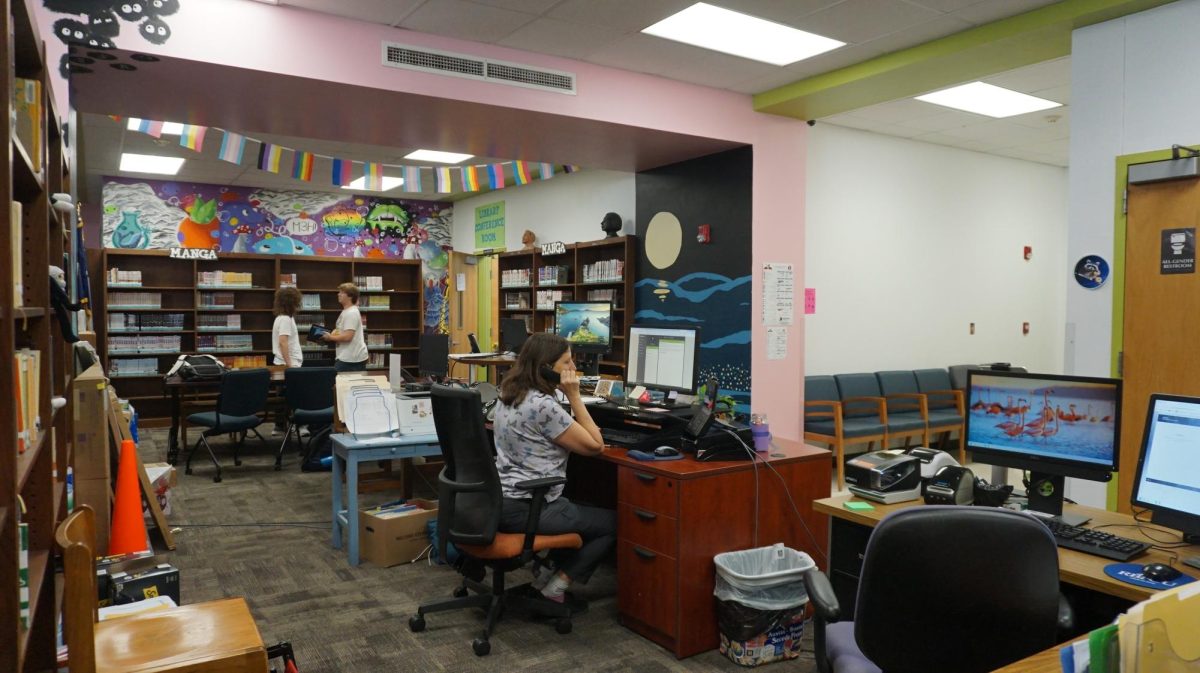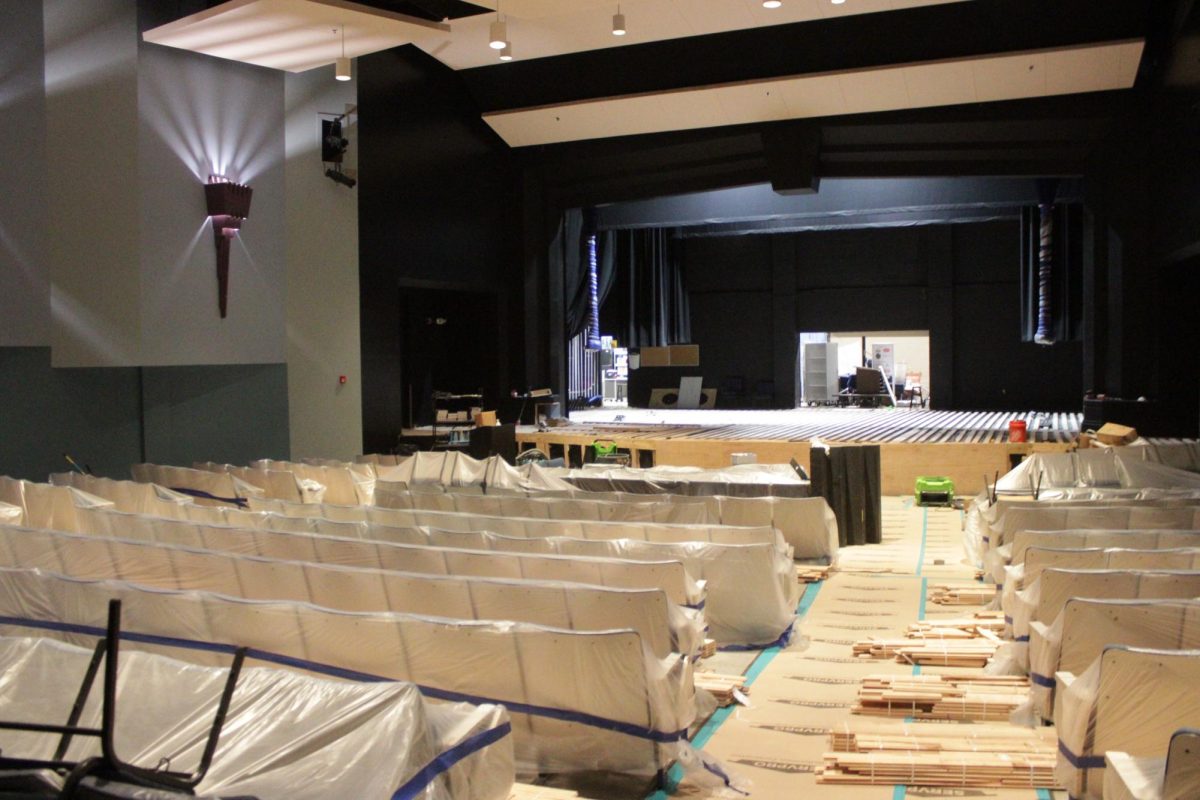McCallum’s school population recently passed 2,000 students, but with the overcrowded hallways and increasing class sizes, the school built in 1953 was not prepared to hold this many. Despite the gradual updates such as the new dance building, new turf field and the Arts Center, students and teachers at Mac have felt the effects of the delayed modernization.
“Between only six–minute passing periods and the insane traffic in the main hall, some classes are really hard to get to,” senior Kalliope Haltom said. “I have English right after Blue Brigade, and making it from the dance building to the English hall before the bell is nearly impossible with all the traffic.”
McCallum may be crowded now, but it hasn’t always been this way. Richard Cowles, a math teacher, PALS adviser and the well-known Count on the morning announcements, is on to his 28th year of teaching at the school. When he started in 1997, the population was just under 1,500. During his time, the study body has kept growing. Part of this is due to the neighborhoods near McCallum getting younger and more families moving in. Records show between the year 2000 and 2010, Austin’s population grew near 150,000 people, making Austin the fastest growing city in the United States.
“When I moved onto my street there were just two families, mostly everyone else was either retired, or their kids were grown,” Cowles said. “But now, our street probably has close to 10 families.”

“A big contribution to the growing population is certainly the success of the fine arts program,” Cowles said. “I think it’s a really unique opportunity to come to a school that has stellar academics and has successful athletics. Overall, I think the well-rounded opportunities of McCallum contribute to students wanting to be here.”
Today, the fine arts program still attracts more students than the school is capable of holding. A similar problem occurred at Lamar Middle School–it is one of the only two middle schools in Austin ISD with a fine arts program–with their school population also expanding. Therefore, the freshmen class that came from Lamar is used to the overcrowding, but not on the same scale as McCallum.
“There are a lot more people than there were at Lamar and it makes it harder to get to my classes especially because the school is bigger, we are all packed wall to wall,” freshman Owen Fronk said. “I think the school could accept fewer students into the program or stagger release for each class, something similar to what Lamar did.”
Though the problem is straightforward, there is not yet a quick and direct solution to the packed hallways and large classes. The AISD BOND renovation plan to completely modernize the school will not be close to completion until 2040, until then students and teachers must make do with the 75-year-old building.
 “I wish it could be as simple as adding another minute to the passing periods, but that would take time away from class and require reworking to the whole schedule,” Haltom said. “I think the best thing to do is encourage students to use the outside shortcuts whenever possible, and wait for cooler weather when students actually want to be outside.”
“I wish it could be as simple as adding another minute to the passing periods, but that would take time away from class and require reworking to the whole schedule,” Haltom said. “I think the best thing to do is encourage students to use the outside shortcuts whenever possible, and wait for cooler weather when students actually want to be outside.”
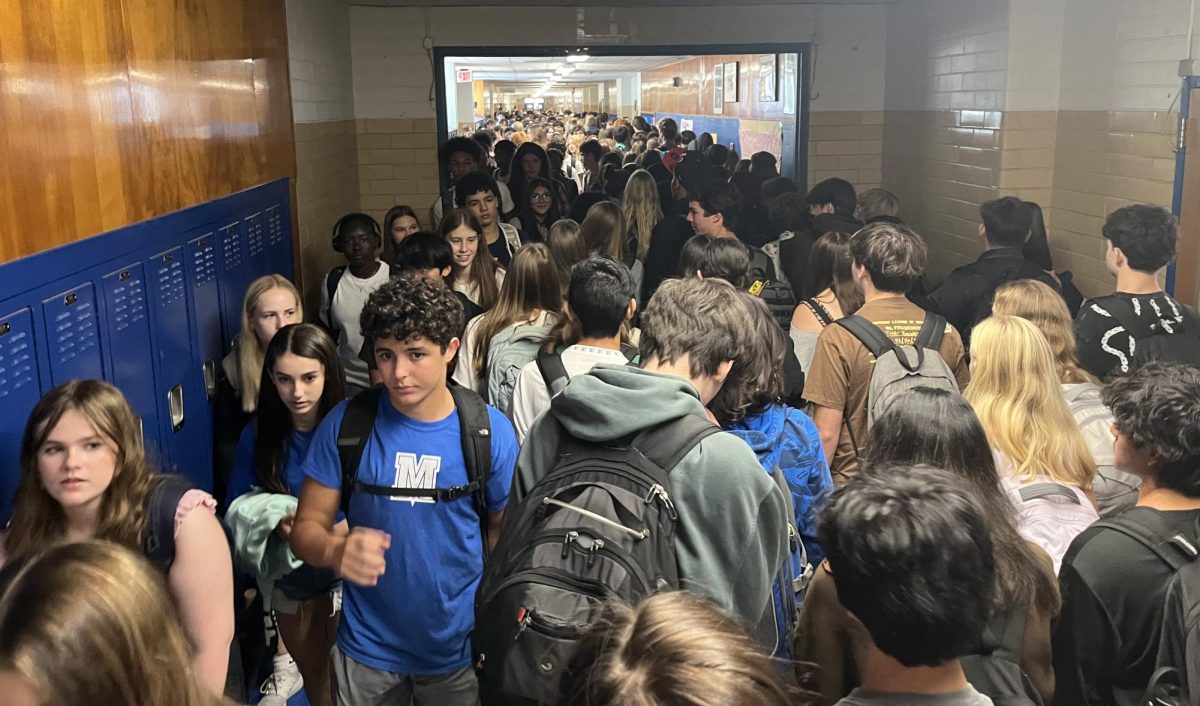
With the anticipated expansion and construction of McCallum, there’s no telling of the school’s future population limits. In its present structure, however, Cowles, as well as other students and teachers, feel that we have nearly reached capacity.
“In [the school’s] current form, we’re pretty close to maxed out, so from here I think the new building is gonna be pretty important if McCallum continues to grow,” Cowels said. “Honestly though, one of the things I like about McCallum is that we aren’t crazy big. I feel like we know most of our kids, like we’re just able to be more connected to each other. It’s a nice, neat community.”


